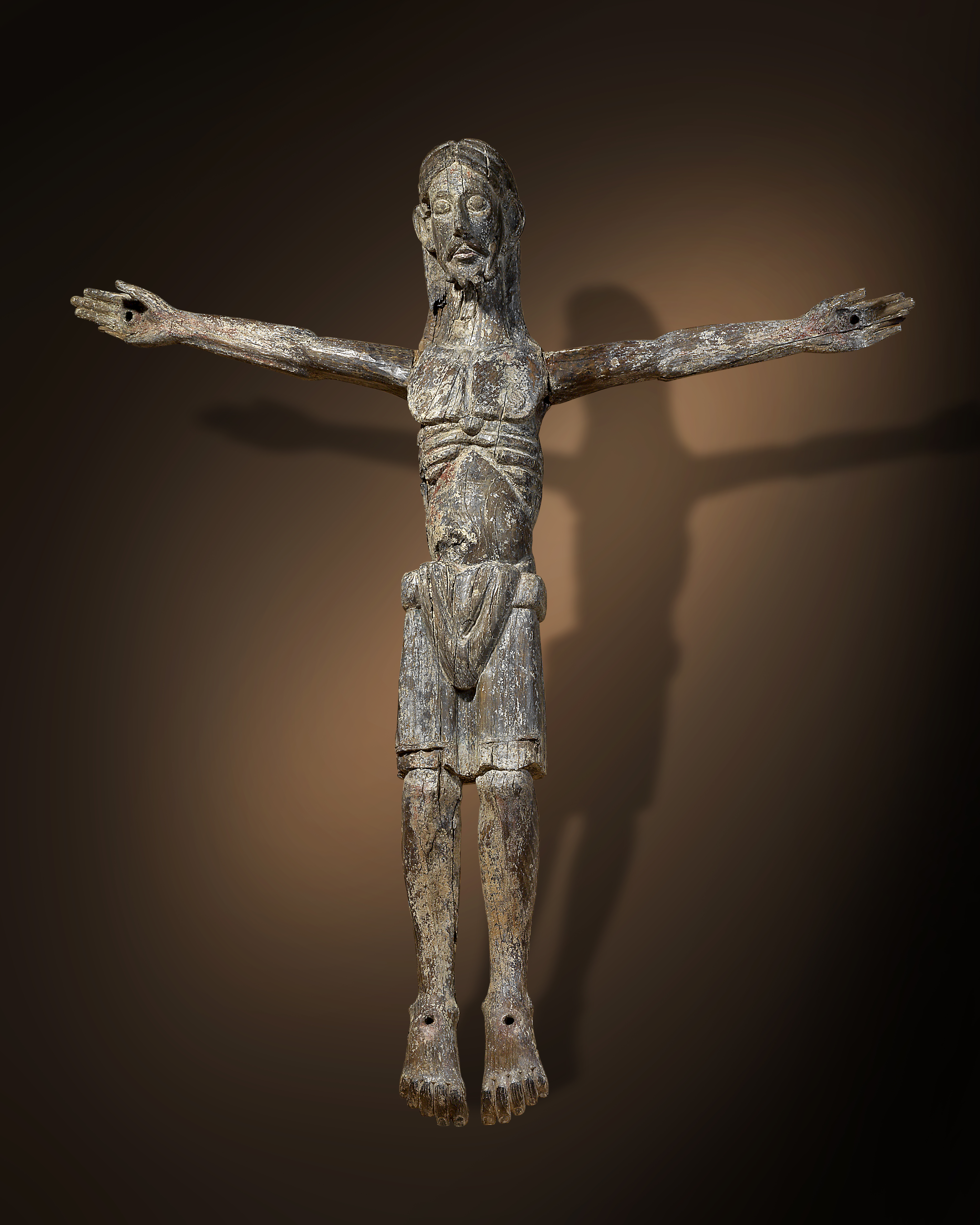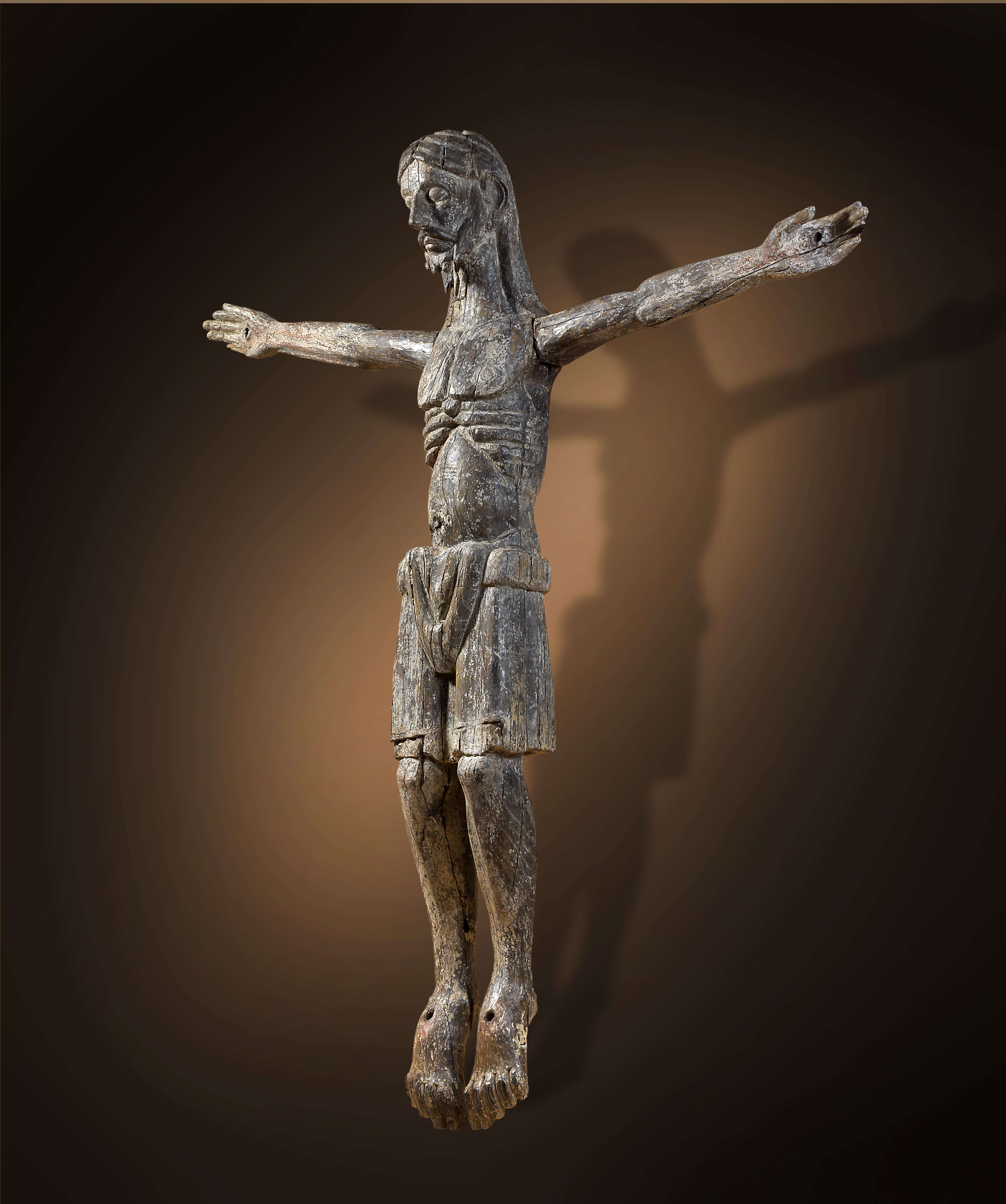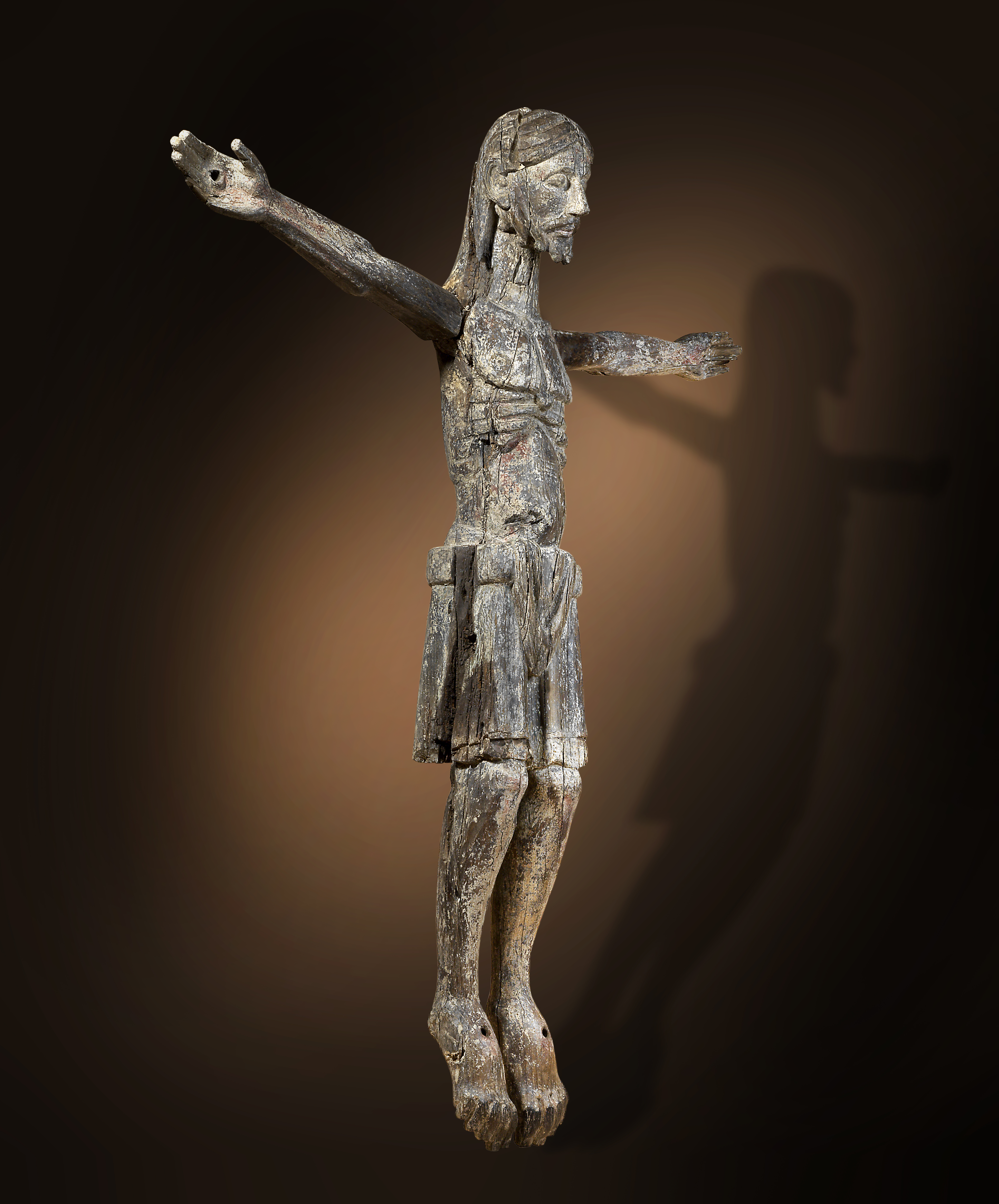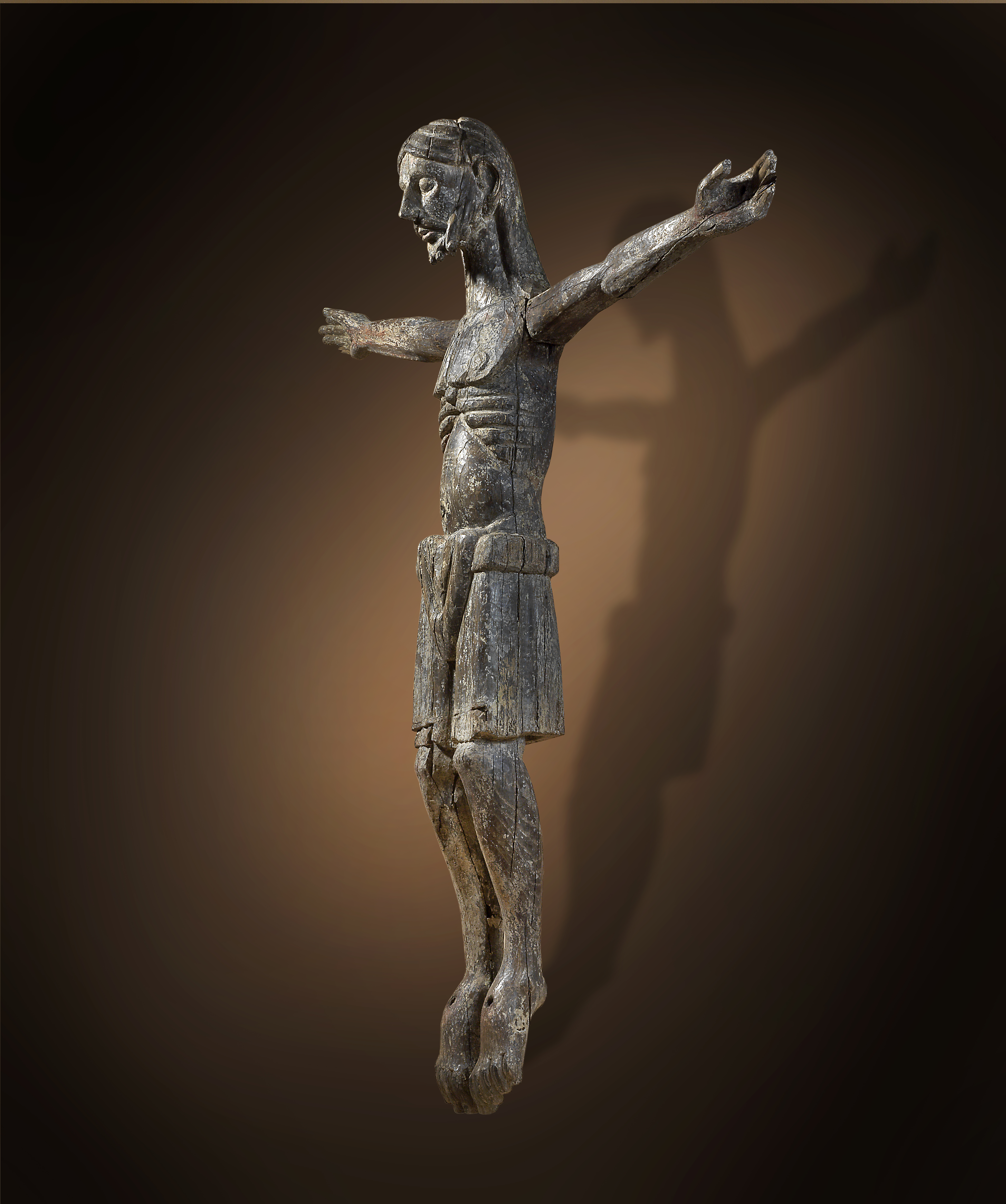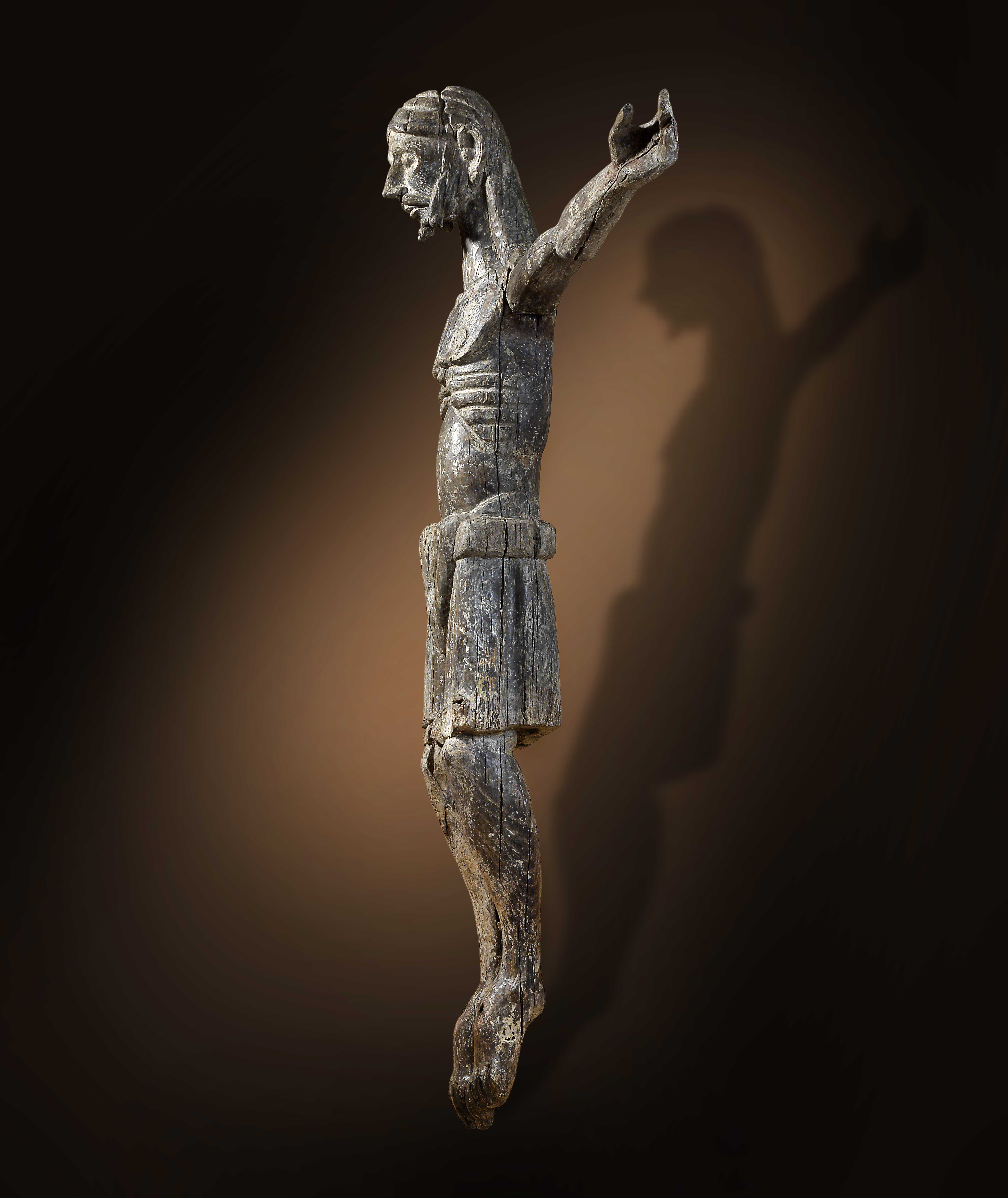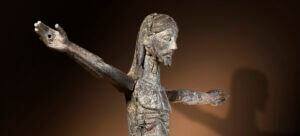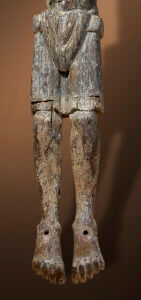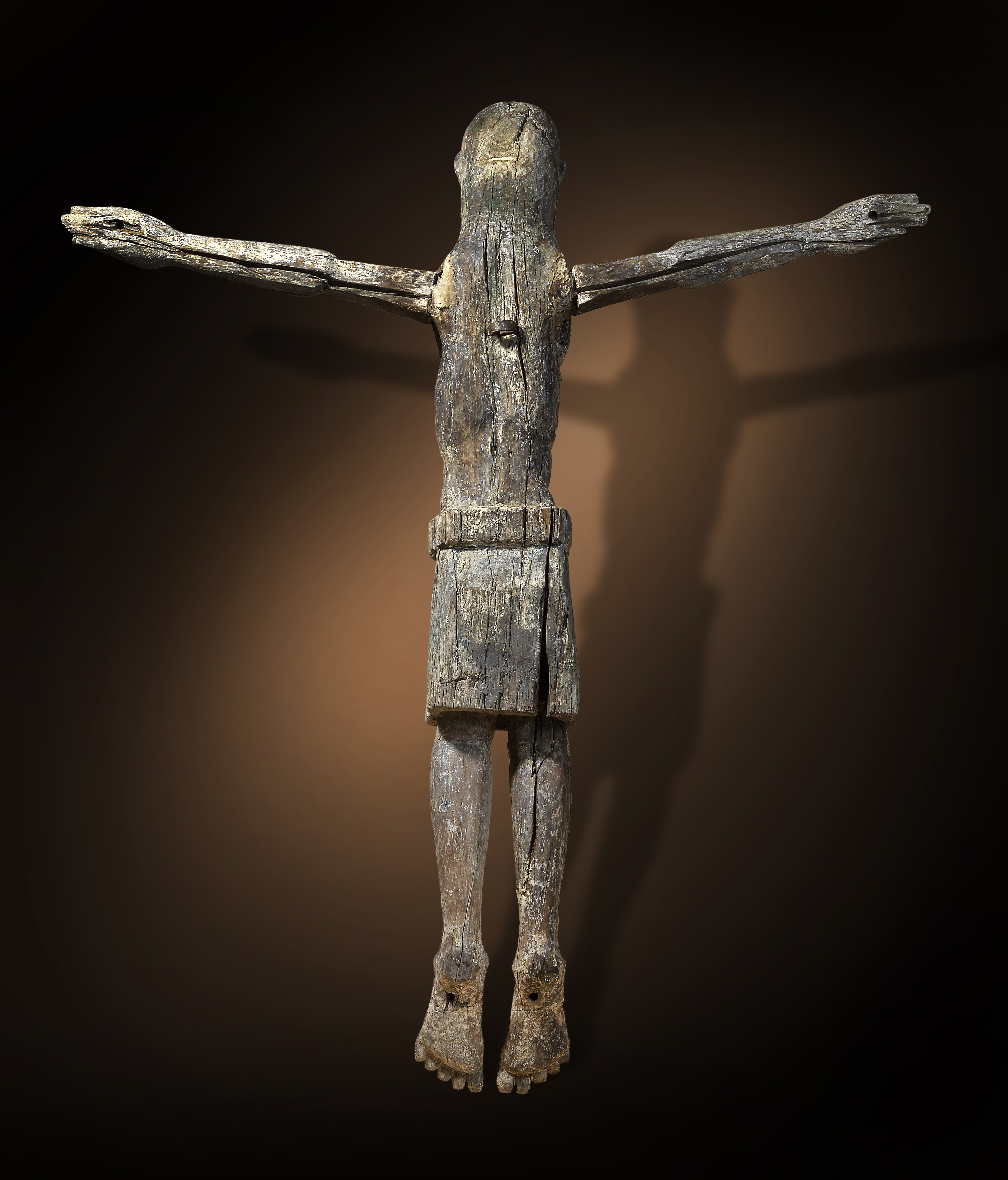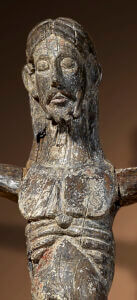The monumental museum crucifix (110 x 98 cm) can be dated stylistically between 1170 and 1190, although its origin can be attributed to south-eastern France. Only the arms are later restorations from around 1400 and carved from chestnut wood, while the rest of the figure is made of oak. The state of preservation of the Christ is good in keeping with its age; remnants of a chalk primer are preserved.
Particularly impressive is the pronounced rigidity of the elongated body, typical of early Romanesque figures. Its calm yet penetrating expression is revealed by the oversized, forward-facing eyes set in deep sockets. Still, his gaze is slightly downcast and accentuated by the prominent nose and large flaring ears that frame the face. His hair falls to his shoulders in a symmetrical manner; his chin, cheek and moustache, which have grown together, end in artificial, volute-shaped curls. It should be noted that this striking physiognomy is particularly due to the elevated context of installation, as this figure was most likely designed to be viewed from below.
To emphasize Christ’s suffering on the cross, the emaciated rib cage including ribs and central sternum are particularly carved out. Furthermore, the oversized nipples give expression to an almost frightening nudity. Although later, the sinewy arms and hands with overlong fingers skillfully take up the stylized martyring. The clear stigmata holes also indicate that the crucifix was attached to a cross with large nails, probably in the nave of a church, well above the heads of the faithful. The angular, block-like perizonium is particularly typical of the period before 1200 and skillfully balances out the height of the figure. The V-shaped bowl fold reflects the proportions of Jesus’ face in its slight rounding and is very similar to an early 12th century bronze crucifix from Pays de la Loire (collection of Adolphe Stoclet), now in the British Museum (1965,0704.1).[1] The limp legs hanging down below with larger than average feet, the toes curled up like claws in pain, contribute to the shockingly dramatic overall appearance.
Although this unique, phenomenally preserved crucifix is shown with a martyred body, Christ triumphs over death, symbolized by the suffering-idealized representation in a majestic straight posture with eyes wide open.
[1] https://www.britishmuseum.org/collection/object/H_1965-0704-1.
